Paper found and won on eBay by the USS Helena Organization.
Donated to the Montana Miilitary Museum, Helena , MT.


Posted 8 February 2010.
Paper found and won on eBay by the USS Helena Organization.
Donated to the Montana Miilitary Museum, Helena , MT.


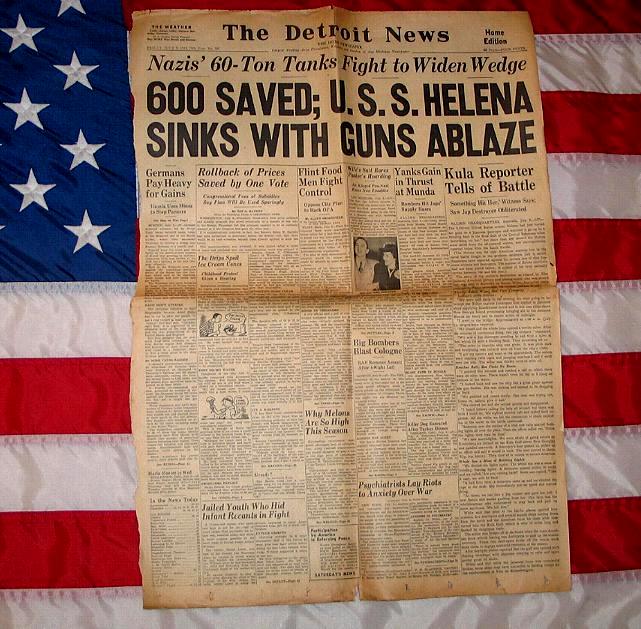
Kula Reporter Tells of Battle
'Something Hit Her,' Witness Says;
Saw Jap Destroyer Obliterated
ALLIED HEADQUARTERS, Australia, July 9.---(AP)---
(The Helena was the only American warship lost in the naval battle fought in the predawn darkness July 6, earlier dispatches The story of the cruiser's destruction as related by Alan Jackson, American picture pool photographer, who was aboard her, was Jackson's story follows:
"We were told early in the evening we were going to intercept the Tokyo express (nicknamed first applied to Japanese ships "I went to the bridge. Approximately at 1:30 a.m. (July 6), targets were reported".
"We closed and the whole force opened a terrific salvo. After six minutes of continuous firing, two Jap cruisers disappeared".
"We saw a Jap destroyer standing in and fired a salvo at her, which hit with a blinding flash. Then something hit us".
"The order to abandon ship was given. It was pitch dark and everything was covered with oil from the ship's vitals.
"I got my camera and went to the quarterdeck. The sailors were slashing rafts loose and jumping overboard and Reaches Raft, But Finds No Room
"I paddled five minutes and reached a raft on which there were 30 other men.
"I looked back and saw the ship like a great ghost against the gun flashes. She was sinking and seemed to be dragging us back".
"We paddled and rowed madly. One man was crying out, 'Come on, sailors, give it hell.'
"We cleared her and she settled quietly and disappeared".
"I heard fellows calling for help all around, but there was little I could do. We sighted another raft and lashed both together. "Someone saw the outline of a ship and rafts started flashing lights all over the place. Then the officer called out, "We saw searchlights. We were afraid of going ashore on Kolombangara (island on the Kula Gulf above New Georgia) Whole Sea a Mass of Bobbing Lights
"We flashed the lights again. The whole sea was a mass of bobbing, floating lights. A destroyer passed within 50 yards and "A half hour later, a destroyer came up and we climbed the rope to the deck. She immediately put on speed and started firing.
"At dawn, we ran into a Jap cruiser and gave her hell. I saw flames and smoke gushing from her. One hero was the whaleboatman
White said that prior to the battle, planes spotted four cruisers, five destroyers and several supply ships coming down from The action was broken off at daybreak when the main American force retired, leaving two destroyers to pick up the cruiser survivors. After daybreak, planes reported that the gulf was spotted with floating wreckage, with Japanese clinging to rafts and spars amidst White said that while the Japanese force was completely broken, some ships may have succeeded in landing troops for the reinforcement |
 USS Helena CL-50 men shortly after their rescue in 1943. |
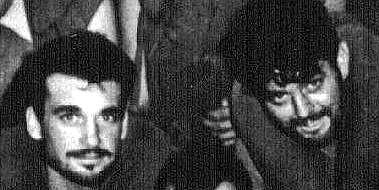 Left - LTJG Bin Cochran. Right - CTC Otis Point Pictures provided by LTJG Bin Cochran |
The following picture found on eBay and donated by Dave Brouchoud.
Shipmate on the USS Helena CA-75 From January 1952 - May 1955.
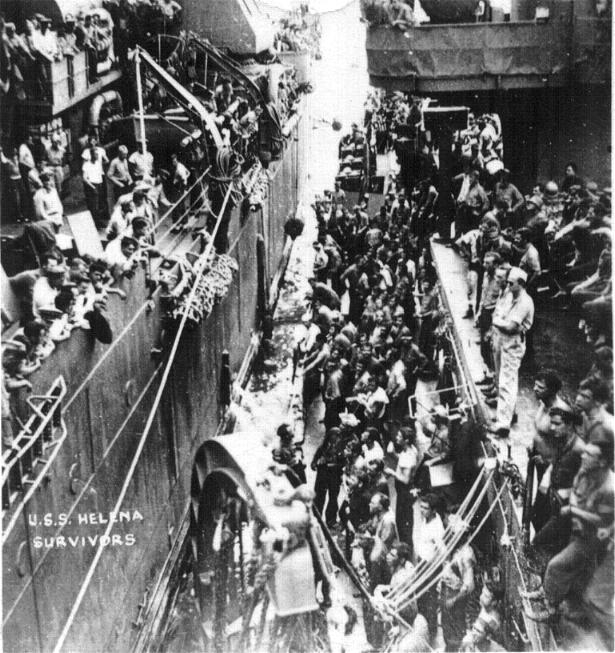
The following picture comes from the DeWolfe Hotchkiss, USN, Collection. To hear "Taps" click Here. The following narrative and newspaper picture provided by Charlie McClelland. His War Is Ended - - - Yours Is Not
Above is the picture of a sailor's funeral. He was a young member of the crew of the
Permission to post comes from Lady Audrey's Gallery.
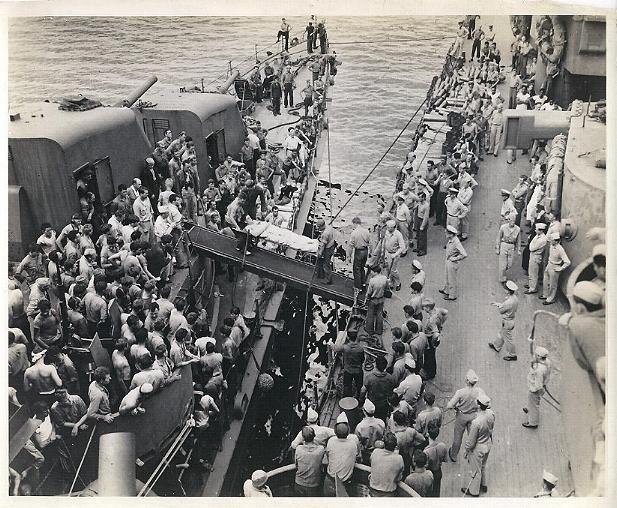
(Information found on the back of the picture)
AMERICANS ROUT JAPANESE IN TWO-NIGHT BATTLE OF KULA GULF, JULY 5 AND 6, 1943
WOUNDED TRANSFERRED AT SEA--A GROUP OF SURVIVORS OF THE USS HELENA, PICKED
UP BY AN AMERICAN DESTROYER, ARE TRANSFERRED TO ANOTHER U.S. WARSHIP AT SEA.
A WOUNDED SAILOR IS BEING CARRIED ACROSS THE GANKPLANK BETWEEN THE TWO SHIPS.
(The Nicholas left, to the Honolulu.) AUGUST 14, 1943

Photo # 80-54566 Funeral services for a casualty
of the USS Helena, after the Battle of Kula Gulf,
July 7, 1943.
This is a Wav file and could take 1 minute 30
seconds to load and play. (Worth it! Ed)
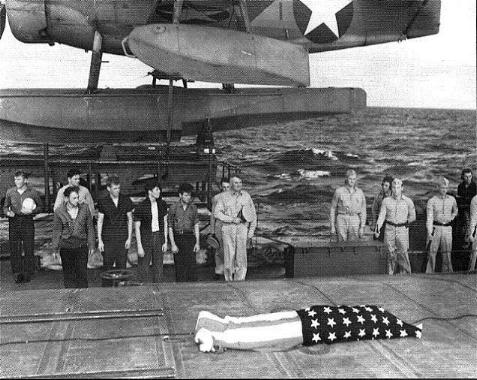
Funeral services aboard Honolulu for
Irwin L. Edwards F1c USNR Service
# 644 09 79 who died aboard Nicholas
from wounds or injuries received in action,
after being picked up with other survivors.
To see a picture of the USS Honolulu CL-48,
click on the photo above.
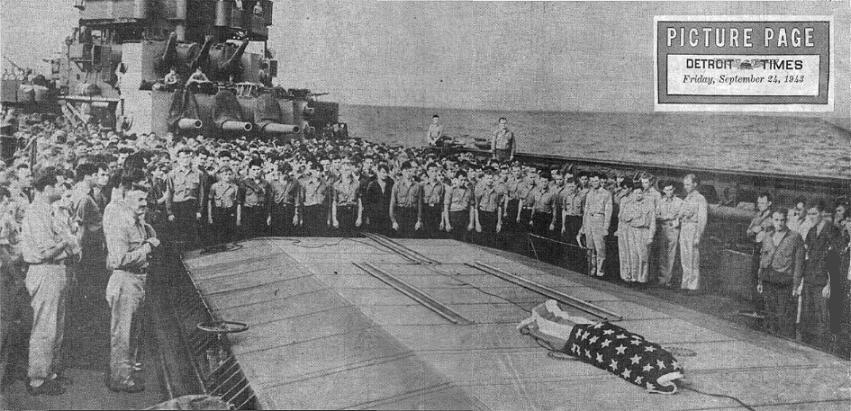
U.S.S. Helena and was killed two months ago fighting the Japanese in the battle of
Kula Gulf. so for him the war is ended. He will sleep the long sleep far from his home
in the alien waters of the South Pacific. His fighting is over; his job is done. But his
shipmates, standing grim faced and bare-headed about his flag-draped coffin, will
work harder, fight more savagely because he is lost to them. How about us here at
home? What can we do to avenge the death of this American boy and thousands like
him who are dying in battle? We too, must work harder, give more freely of our
energies and all our resources else their death cannot be justified. That's why we must
buy extra War Bonds-----and buy them now! Remember: He gave his life; we only
lend our money.